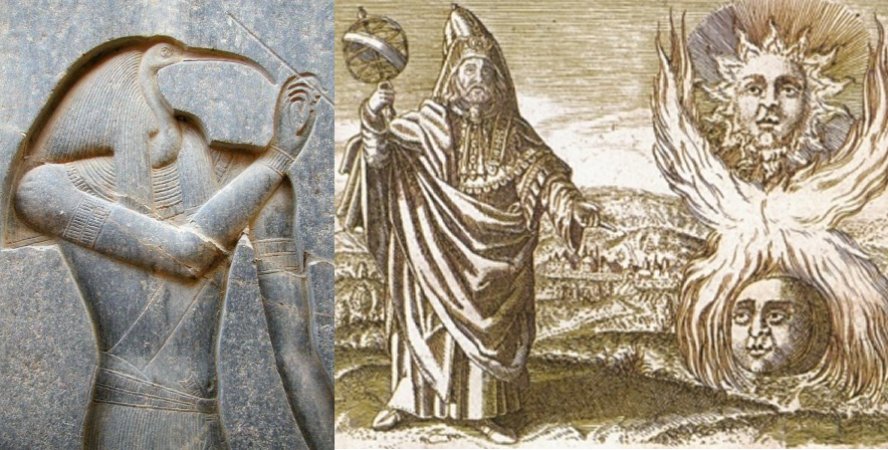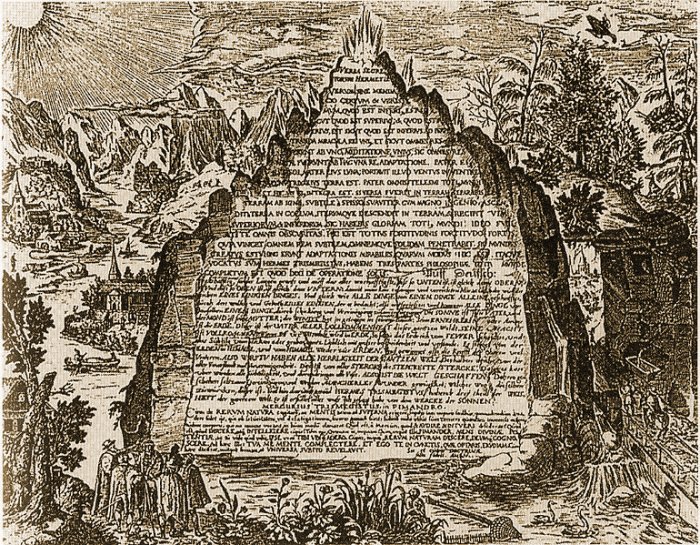Hermes Trismegistus Brought Divine Wisdom To Mankind – Secret Knowledge Of Hermetica
Ellen Lloyd - AncientPages.com - In the Hellenistic era, worship of the Greek God Hermes was combined with the cult of the Egyptian God Thoth, which gave rise to the cult of Hermes Trismegistus ("thrice-greatest Hermes").
As such, Hermes played his role in later esoteric cults.
Left: God Thoth. Credit: Public Domain. Right: Hermes Trismegistus. Credit: Public Domain
Hermes Trismegistus was a teacher, magician, and author of "Hermetica," Egyptian-Greek wisdom texts from the 2nd century AD and later.
The "Hermetica" contains a religious, philosophical, and esoteric tradition that forms the basis of Hermetism, which was of great importance during the Renaissance and the Reformation. Anyone interested in esotericism should read the Hermetica.
Who Was Mysterious Hermes Trismegistus?
Hermes Trismegistus influenced many ancient thinkers as the first intelligencer in the world and a divine source of wisdom. He was credited with producing tens of thousands of writing that contained profound knowledge about the Universe, nature of time, creation of humankind, incarnation of the soul, and many other subjects that later became fascinating subjects, especially to secret societies.
According to Plato, there were secret halls containing 9,000year-old historical records in the temple of Neith in the city of Sais, Egypt. As previously mentioned on Ancient Pages, the history of Sais goes back to Egypt's pre-dynastic times (before 3100 BC). Still, the only visible ruins are not older than the 11th century. At the ancient site, there is now a village of Sa al-Hagar ('Sa - means stone' in Arabic).
There are no surviving traces of this town before the Late New Kingdom (c.1100 BC).
Hermes Trismegistus was undoubtedly a fascinating individual who was considered by some a contemporary of Moses and a forerunner of Christ.
Hermes Trismegistus, floor mosaic in the Cathedral of Siena. Credit: Public Domain
Still, it is complicated to say who he was because our understanding of this great personality depends on the ancient source we rely on.
Gary Lachman wrote in his book The Quest For Hermes Trismegistus, according to one source, Hermes Trismegistus lived "before the Flood and, after inventing hieroglyphics, inscribed his wisdom in them on the stele, to preserve it from destruction. After the Flood, another Hermes Trismegistus translated this wisdom into Greek and transcribed it into books. One built the pyramids? Another created the fantastic city of Adocentyn, where talismanic images were used to regulate the Nile and make the inhabitants virtuous, and where a towering multi-colored beacon flashed a different color every day.
One was Adam's grandson and inscribed his wisdom on two columns, one of brick and the other of stone, to preserve it from some world conflagration. Another did the same, this time in secret chambers below Egyptian temples.? One passed on his wisdom to Abraham (perhaps through Sara), and thus was responsible for the rise of Israel."
Many ancient sources state that Hermes Trismegistus walked with gods and passed his divine wisdom to humankind. It has been written that Hermes Trismegistus, an extraordinary intellectual advised an even more prestigious god as Osiris.
Though many claims he was only a fictional person, some are convinced he did exist, and he remains one of the most enigmatic persons in intellectual history. Some suggested that Hermes Trismegistus was no god like Thoth or Hermes but a prophet.
Powerful Legacy Of Hermes Trismegistus
Students of esoteric knowledge have always been fascinated by the teachings of Hermes Trismegistus. The mysterious Emerald Tablet we wrote about on Ancient Pages is particularly interesting. The Emerald Tablet, also known as the Smaragdine Table, or Tabula Smaragdina, is an ancient artifact whose source is unknown.
The tablet is part of the Hermetica and is one of Western occultism's most revered magical documents. It reveals a profound spiritual technology that has survived despite many efforts to suppress it. The tablet's true origin is lost in ancient legends that go back more than 10,000 years, and one of such legends says that the artifact was discovered in a caved tomb, clutched in the hands of the corpse of Hermes Trismegistus.
Many hermetic texts were lost during the Middle Ages, but some were re-discovered in Byzantine copies. During the Renaissance, the wisdom of Hermes Trismegistus has revived again. And Hermetic texts became very popular in Italy thanks to Marsilio Ficino (1433-1499), an Italian scholar and Catholic priest who was one of the most influential humanist philosophers of the early Italian Renaissance and a member of the Queen Catherine de Medici court.
An imaginative 17th-century depiction of the Emerald Tablet from the work of Heinrich Khunrath, 1606. Photo: Wikipedia
Ficino translated the texts, and the incredible knowledge of Hermetica became of great interest to scholars such as Giordano Bruno, Paracelsus, and Pico della Mirandola, regarded as a celebrated Renaissance philosopher.
In the book The Secret History of Hermes Trismegistus: Hermeticism from Ancient to Modern Times, author Florian Ebeling writes that "Pico's nine hundred "philosophical, cabalistic, and theological conclusions" argued that there was fundamental agreement among the various traditions of intellectual history, which included the Greek philosophy of Plato and Aristotle, the Judeo-Christian tradition of the Bible and its theological interpretation in the works of Thomas Aquinas, and the esoteric traditions of the Cabala, Hermeticism, and Arab philosophy.
Among Pico's nine hundred theses, ten referred to Hermes Trismegistus:
- Wherever there is life, there is soul. Wherever there is a soul, there is a mind.
- Everything moved is corporeal, everything moving incorporeal.
- The soul is in the body, the mind is in the soul, the Word is in the mind, and the Father of these is God.
- God exists around all and through all things. The mind exists around the soul, the soul around the air, the air around the matter.
- Nothing in the world is devoid of life.
- Nothing in the Universe can suffer death or destruction. Corollary: Life is everywhere, providence is everywhere, immortality is everywhere.
- God announces the future to man in six ways: through dreams, portents, birds, intestines, spirit, and the Sibyl.
- What is true is not perturbed, not determined, not colored, not fashioned, not agitated, but is naked, transparent, comprehensible through itself, intransmutably good, and fully incorporeal.
- Within each thing there exist ten punishers: ignorance, sorrow, inconstancy, greed, injustice, lustfulness, envy, fraud, anger, malice.
- A profound contemplator will see that the ten punishers, of which the preceding conclusion spoke according to Mercury, correspond to the evil order often in the Cabala and its leaders, of whom I have proposed nothing in my Cabalistic conclusions because it is secret."
The knowledge of Hermes Trismegistus spread across Europe. It was a time when many scientists and philosophers were interested in alchemy, and many alchemy symbols were based on the knowledge found in Hermetica. Queen Catherine de Medici, who was very interested in occult knowledge, was also one of many who considered this secret ancient wisdom fascinating.
Many secret ancient societies, such as the Rosicrucians, studied Hermes Trismegistus's teachings because his wisdom was believed to open the door to the ultimate truth. These ancient secrets were closely guarded by the mystery schools whose initiates had taken an oath of secrecy, punishable by death.
The divine knowledge of Hermes Trismegistus has been preserved for future generations and is accessible to the general public.
Written by Ellen Lloyd – AncientPages.com
Updated on July 13, 2022
Copyright © AncientPages.com All rights reserved. This material may not be published, broadcast, rewritten or redistributed in whole or part without the express written permission of AncientPages.com
Expand for referencesMore From Ancient Pages
-
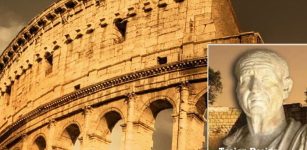 Battle Of Abrittus: Roman Emperor Decius And His Troops Ambushed And Defeated By Invading Goths
Featured Stories | Jul 1, 2019
Battle Of Abrittus: Roman Emperor Decius And His Troops Ambushed And Defeated By Invading Goths
Featured Stories | Jul 1, 2019 -
 Long-Forgotten Ancient Book Contains Extensive Scientific Survey Of North America Made 4,500 Years Ago
Featured Stories | Jul 26, 2019
Long-Forgotten Ancient Book Contains Extensive Scientific Survey Of North America Made 4,500 Years Ago
Featured Stories | Jul 26, 2019 -
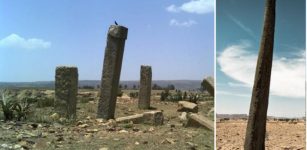 1,000-Year-Old Church Walls Unearthed In Ethiopia By Polish Archaeologists
Archaeology | Apr 26, 2020
1,000-Year-Old Church Walls Unearthed In Ethiopia By Polish Archaeologists
Archaeology | Apr 26, 2020 -
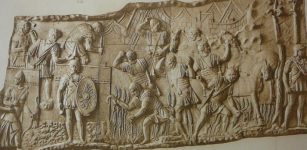 Secret Police In Ancient Rome – Frumentarii: Who Were They And What Was Their Role?
Featured Stories | Aug 12, 2019
Secret Police In Ancient Rome – Frumentarii: Who Were They And What Was Their Role?
Featured Stories | Aug 12, 2019 -
 Ancient Basilica Cistern: Intriguing Hidden Subterranean World With Medusa Heads
Featured Stories | Dec 11, 2018
Ancient Basilica Cistern: Intriguing Hidden Subterranean World With Medusa Heads
Featured Stories | Dec 11, 2018 -
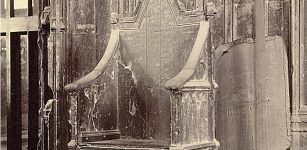 Stone Of Scone: Mysterious Stone Of Destiny Has Turbulent Ancient History
Artifacts | Mar 19, 2016
Stone Of Scone: Mysterious Stone Of Destiny Has Turbulent Ancient History
Artifacts | Mar 19, 2016 -
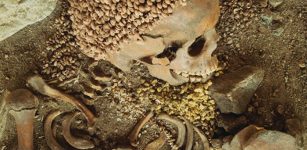 Broken Pebbles In Arene Candide Cave Shed New Light On Ancient Burial Practices
Archaeology | Mar 7, 2017
Broken Pebbles In Arene Candide Cave Shed New Light On Ancient Burial Practices
Archaeology | Mar 7, 2017 -
 Akrotiri Of Thera: Sophisticated City In The Greek Cyclades Devastated By Volcanic Eruption
Civilizations | Jul 6, 2016
Akrotiri Of Thera: Sophisticated City In The Greek Cyclades Devastated By Volcanic Eruption
Civilizations | Jul 6, 2016 -
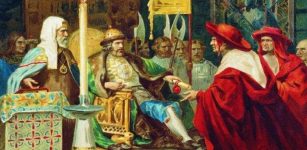 Alexander Nevsky: Grand Prince Of Novgorod, Skilled Fighter, Quick–Thinking Strategist Who Defeated Swedish And German Invaders
Featured Stories | Feb 22, 2019
Alexander Nevsky: Grand Prince Of Novgorod, Skilled Fighter, Quick–Thinking Strategist Who Defeated Swedish And German Invaders
Featured Stories | Feb 22, 2019 -
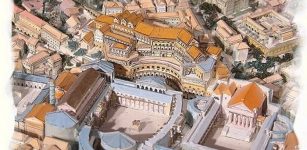 Trajan’s Market Was The World’s First Known Shopping Mall
Ancient History Facts | Jul 2, 2016
Trajan’s Market Was The World’s First Known Shopping Mall
Ancient History Facts | Jul 2, 2016 -
 Captain James Cook’s Famed Vessel The Endeavour Possibly Discovered On The Coast Of Rhode Island
Archaeology | Feb 4, 2022
Captain James Cook’s Famed Vessel The Endeavour Possibly Discovered On The Coast Of Rhode Island
Archaeology | Feb 4, 2022 -
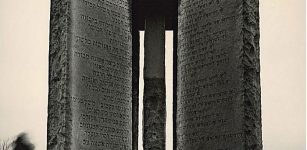 ‘Georgia Guidestones’: Bizarre Ominous And Strange Monument In North America
Featured Stories | Mar 27, 2022
‘Georgia Guidestones’: Bizarre Ominous And Strange Monument In North America
Featured Stories | Mar 27, 2022 -
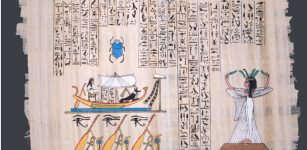 16 Meters Long Ancient Papyrus With Spells From The Book Of The Dead Found In Saqqara
Archaeology | Jan 19, 2023
16 Meters Long Ancient Papyrus With Spells From The Book Of The Dead Found In Saqqara
Archaeology | Jan 19, 2023 -
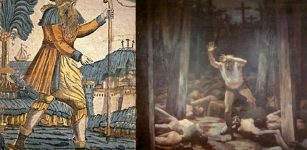 Legend Of The Immortal Wandering Jew Cursed By Jesus
Biblical Mysteries | Jul 17, 2018
Legend Of The Immortal Wandering Jew Cursed By Jesus
Biblical Mysteries | Jul 17, 2018 -
 Celtic Valhalla And Sacred Wells – Magic Of Invisible Worlds
Celtic Mythology | Nov 17, 2021
Celtic Valhalla And Sacred Wells – Magic Of Invisible Worlds
Celtic Mythology | Nov 17, 2021 -
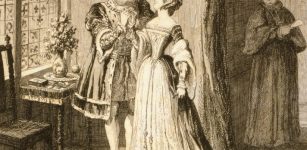 On This Day In History: Anne Boleyn, The Second Wife Of Henry VIII – Beheaded For Adultery, Treason And Incest – On May 19, 1536
News | May 19, 2016
On This Day In History: Anne Boleyn, The Second Wife Of Henry VIII – Beheaded For Adultery, Treason And Incest – On May 19, 1536
News | May 19, 2016 -
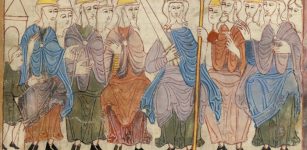 Anglo-Saxon Kings Were Mostly Vegetarians Before Vikings Settled In England
Archaeology | Apr 21, 2022
Anglo-Saxon Kings Were Mostly Vegetarians Before Vikings Settled In England
Archaeology | Apr 21, 2022 -
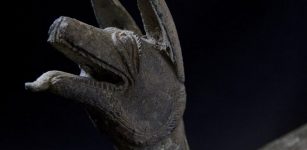 Beautiful And Unique Ancient Roman Hoard Discovered In UK
Archaeology | Oct 3, 2017
Beautiful And Unique Ancient Roman Hoard Discovered In UK
Archaeology | Oct 3, 2017 -
 Has The Mystery Of The Hobbits Finally Been Solved?
Archaeology | Apr 21, 2017
Has The Mystery Of The Hobbits Finally Been Solved?
Archaeology | Apr 21, 2017 -
 North America Was Settled By Previously Unknown People – DNA From A 11,500-Year-Old Skeleton Reveals
Archaeology | Jan 3, 2018
North America Was Settled By Previously Unknown People – DNA From A 11,500-Year-Old Skeleton Reveals
Archaeology | Jan 3, 2018

